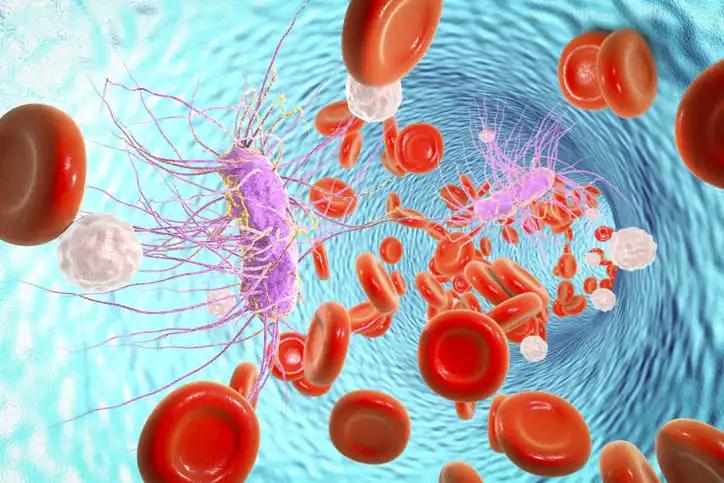KEY TAKEAWAYS
- This phase II study evaluated tepotinib + osimertinib in advanced EGFR-mutated, MET-amplified NSCLC pts who had progressed after 1L osimertinib.
- The study’s primary endpoint was the objective response by IRC in patients with central FISH+ METamp. Secondary endpoints were DOR, PFS, and OS.
- Tepotinib + osimertinib showed durable responses and manageable safety in EGFR-mutated, MET-amplified NSCLC pts who had failed 1L osimertinib.
The combination of Tepotinib, a MET TKI, and osimertinib has demonstrated notable effectiveness in treating patients (pts) with EGFR-mutated, MET-amplified NSCLC who have progressed after first-line osimertinib treatment. A report presented the primary analysis from the INSIGHT 2 study, focusing on pts with at least 9 months of follow-up as of March 28, 2023. Additionally, outcomes for pts in Asia are highlighted, given the region’s higher prevalence of EGFR-mutated NSCLC.
In this open-label, Phase II trial, pts with advanced EGFR-mutated, MET-amplified NSCLC who had progressed after first-line osimertinib were treated with a daily dose of 500 mg tepotinib (450 mg active ingredient) and 80 mg osimertinib. MET amplification was confirmed either through tissue biopsy using FISH (with MET gene copy number at least 5 and/or MET/CEP7 ratio at least 2) or liquid biopsy using NGS (with MET plasma gene copy number at least 2.3; Archer®).
The primary endpoint was objective response as measured by IRC in pts with MET amplification confirmed via central FISH. Secondary endpoints were duration of response (DOR), progression-free survival (PFS), and overall survival (OS). Safety data is included for all pts who received at least one dose of the therapy.
Out of 481 pre-screened pts, 128 were administered the tepotinib and osimertinib combination (median age 61, range 20-84; 57.8% female; 61.7% Asian; 67.2% non-smokers; 72.7% with an ECOG PS of 1). Among 98 pts with confirmed FISH+ MET amplification, the objective response rate (ORR) was 50.0% (95% CI: 39.7-60.3). The median duration of response (mDOR) stood at 8.5 months (95% CI: 6.1-ne), and median progression-free survival (mPFS) at 5.6 months (95% CI: 4.2-8.1). In Asia, 76 pts were enrolled.
Among 52 with FISH+ MET amplification, the ORR was 59.6% (95% CI: 45.1-73.0), mDOR was 7.3 months (95% CI: 4.7-ne), and mPFS was 6.9 months (95% CI: 5.4-8.4). Positive outcomes were also noted in pts confirmed via liquid biopsy NGS+ MET amplification. Regarding treatment-related adverse events (TRAEs), diarrhea was most common (49.2%; Grade ≥3, 0.8%), followed by peripheral edema (40.6%; Grade ≥3, 4.7%). Dose reduction was needed for tepotinib in 27 pts (21.1%) and osimertinib in four (3.1%). Thirteen pts (10.2%) discontinued due to TRAEs, primarily pneumonitis (4.7%). Safety profiles were comparable for pts in Asia.
The combination of tepotinib and osimertinib yielded durable responses and an acceptable safety profile in pts with EGFR-mutated, MET-amplified NSCLC who had progressed after first-line osimertinib. This combination represents a promising oral targeted therapy alternative for a population with high unmet needs, particularly in Asia.
Source: https://cattendee.abstractsonline.com/meeting/10925/presentation/2750
Clinical Trial: https://classic.clinicaltrials.gov/ct2/show/NCT03940703
Kim, T.M., Guarneri, V., Jye, V.P., Khaw, L.B., Yang, J-J., Wislez, M., Huang, C., Kin, L.C., Mazieres, J., Tho, L.M., Hayashi, H., Nhung, N., Chia, P.L., De Marinis, F., Raskin, J., Zhou, Q., Finochhiaro, G., Le, X., Tan, D., Brutlach, S., O’Brate, A., Adrian, S., Berghoff, K., Ellers-Lenz, B., Karachaliou, N., Wu, Y-L. Tepotinib + Osimertinib in EGFR-mutant NSCLC with MET Amplification Following 1L Osimertinib: INSIGHT 2 Primary Analysis.



